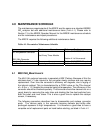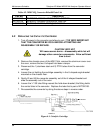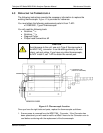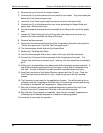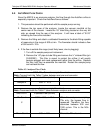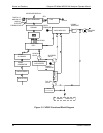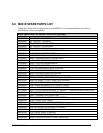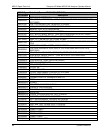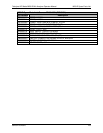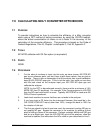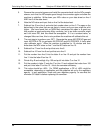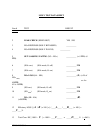
Calculating Moly Converter Efficiencies Teledyne API Model M201E NH
3
Analyzer Operator Manual
48 05206H DCN5910
5. Remove the converter bypass and install the converter back into the NOx sample
stream, such that the NO sample goes through the converter again and allow the
machine to stabilize. Write down your NOx value on your data sheet on line 4
AND line 6 of the data sheet.
6. Note the NO value and input that on line 9 of the data sheet.
7. Subtract line 3 from line 4 and write that number down on line 5. The spec on the
data sheet is the value that we use here in house, and your spec might be a bit
higher. We have found that on NEW Moly converters this spec is a good one
that predicts a good performing Moly converter, but in an older converter might
eat a bit more NO, and this would be acceptable. If it is a constant value, or
changes little over time, this is not a problem the machine will calibrate this out.
8. The next step is to perform your GPT. Generate the same 450 PPB NO gas and
input 400 PPB of O3 (or generate 450 PPB NO and 400 PPB NO2, if that’s what
your calibrator says). Allow the machine to stabilize for 10 minutes and then
write down the NOx value on line 7 and the NO value on line 10.
9. Subtract line 7 from line 6 and put that onto line 8
10. Subtract line 10 from line 9 and put that onto line 11
11. Put the number from line 8 into the letter A on line 12 and put the number from
line 11 into the letter B on line 12.
12. Divide A by B and multiply it by 100 and put it into letter C on line 12.
13. Put the number in letter C onto the C on line 13 and subtract that value from 100
and put it into letter D on line 13. this is the converter efficiency.
14. This value should be >96%. For CEMS applications, a CE of <96% might be
acceptable, depending on application and the guideline set up by the regulatory
agency. In any application, check with your regulatory agency to see what the
minimum CE factor is before replacing the converter.




